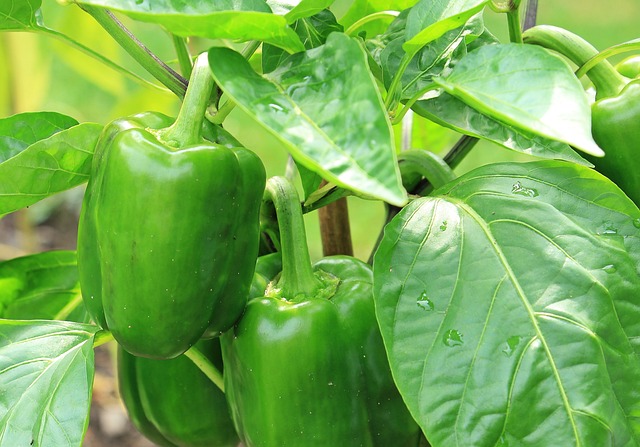As the days grow shorter and the temperature drops, gardeners face the annual dilemma of what to do with their beloved pepper plants. While many plants wither and die in the face of winter’s chill, pepper plants, with proper care and attention, have the potential to survive and even thrive through the cold months. In this comprehensive guide, we will explore the strategies and techniques that can help you successfully overwinter your pepper plants, ensuring a bountiful harvest in the following growing season.
Understanding Pepper Plants and Their Needs
Before diving into the specifics of overwintering pepper plants, it’s essential to understand the biology and requirements of these plants. Pepper plants belong to the genus Capsicum and come in various varieties, including bell peppers, chili peppers, and sweet peppers. To determine whether a pepper plant can survive the winter, we must consider factors such as temperature tolerance, plant age, and overall health.
Temperature Tolerance
Pepper plants are native to tropical regions and thrive in warm climates. However, with the right care, they can adapt to colder conditions. The key is to understand their temperature tolerance:
- Optimal Temperature Range: Pepper plants typically thrive in temperatures between 70°F and 85°F (21°C to 29°C). They are most productive when temperatures consistently stay within this range.
- Chilly Challenge: The main challenge in overwintering pepper plants is their sensitivity to cold. Exposure to temperatures below 50°F (10°C) can stunt their growth, and temperatures below 32°F (0°C) can lead to frost damage or death.
Plant Age and Health
The age and overall health of your pepper plants play a crucial role in their ability to survive the winter. Young plants, especially those grown from seeds, may not have the robustness to withstand harsh winter conditions. Similarly, plants that have been stressed or weakened by pests or diseases may struggle to make it through the winter.
- Plant Maturity: Pepper plants that are at least two to three months old and have already produced fruit are better equipped to survive the winter. They have stronger root systems and more energy reserves.
- Disease and Pest Management: Ensure your plants are free from diseases and pests before attempting to overwinter them. Address any issues promptly to give your plants the best chance of survival.
Preparing Pepper Plants for Winter
Successful overwintering begins before the first frost hits. To ensure your pepper plants can brave the cold, follow these preparation steps:
Pruning and Trimming
Pruning and trimming your pepper plants before winter can help reduce their size and promote healthy growth. Here’s how to do it:
- Remove Dead or Unhealthy Growth: Trim away any dead or diseased leaves or branches. This not only improves the plant’s overall health but also prevents the spread of disease.
- Top Trim: Some gardeners recommend cutting the plant back by about one-third of its size. This encourages the plant to focus its energy on the remaining healthy parts.
- Avoid Heavy Pruning: While it’s essential to trim your plants, avoid heavy pruning, as it can cause stress. You want to strike a balance between reducing size and maintaining the plant’s vigor.
Transplanting
If your pepper plants are growing in the ground, consider transplanting them into containers before winter. Container gardening offers several advantages for overwintering:
- Mobility: You can move potted pepper plants indoors or to a more sheltered location if the weather becomes extremely cold.
- Better Temperature Control: Containers warm up faster in the sun during the day and cool down more slowly at night, providing a more stable environment for your plants.
- Soil Inspection: When transplanting, you can also inspect the root system and remove any damaged or diseased roots, promoting overall plant health.
Pest and Disease Prevention
Before bringing your pepper plants inside or providing winter shelter, take proactive steps to prevent pests and diseases from hitching a ride:
- Inspect Thoroughly: Examine your plants carefully for any signs of pests or diseases. Common culprits include aphids, spider mites, and whiteflies.
- Neem Oil Treatment: If you find pests, treat your plants with neem oil or an organic insecticidal soap. Repeat the treatment as necessary.
- Quarantine New Plants: If you’re bringing new plants into your garden or greenhouse, quarantine them for a few weeks to ensure they are pest and disease-free before introducing them to your overwintering plants.
Overwintering Pepper Plants Indoors
Once you’ve prepared your pepper plants, it’s time to move them indoors or to a protected location. Here are steps to follow for successful indoor overwintering:
Choosing the Right Location
Selecting the right indoor location for your pepper plants is crucial. Here are some factors to consider:
- Sunlight: Pepper plants require at least 6-8 hours of direct sunlight daily. Place them near a south-facing window or provide supplemental grow lights.
- Temperature: Maintain a consistent indoor temperature between 65°F and 75°F (18°C to 24°C) for optimal growth. Avoid placing your plants near drafts or heaters.
- Humidity: Peppers prefer a humid environment. You can increase humidity by using a humidity tray, a humidifier, or misting the plants occasionally.
Watering and Fertilizing
Proper watering and fertilization are critical during the winter months. Here’s how to care for your pepper plants indoors:
- Watering: Water your pepper plants when the top inch (2.5 cm) of soil feels dry to the touch. Be cautious not to overwater, as root rot can occur in soggy soil.
- Fertilizing: Reduce the frequency of fertilization during the winter. Fertilize your pepper plants every 4-6 weeks with a balanced, diluted liquid fertilizer.
- Monitor Soil pH: Pepper plants prefer slightly acidic soil with a pH between 6.0 and 6.8. Use a pH meter to check the soil periodically and adjust if necessary.
Pest and Disease Management
Even indoors, your pepper plants can still be susceptible to pests and diseases. Keep a watchful eye and take immediate action if any issues arise:
- Regular Inspection: Inspect your plants regularly for signs of pests, such as discolored leaves or tiny insects. Isolate affected plants to prevent the spread of infestations.
- Pruning and Cleaning: Continue to trim away any dead or yellowing leaves. This helps improve air circulation and reduces the risk of disease.
- Insect Prevention: Place sticky traps near your plants to catch flying pests like whiteflies. This can help reduce their numbers.
Overwintering Pepper Plants Outdoors
If you live in a mild climate or prefer to keep your pepper plants outdoors during the winter, there are strategies you can employ to protect them from the cold:
Mulching and Covering
Mulching and covering your pepper plants can provide essential insulation against freezing temperatures. Here’s how to do it:
- Mulching: Apply a layer of mulch around the base of your plants to help retain soil warmth. Straw, leaves, or wood chips work well for this purpose.
- Covering: Use frost blankets or row covers to protect your pepper plants during cold nights. Be sure to remove the covers during the day to allow sunlight and air circulation.
- DIY Mini Greenhouse: If you’re feeling ambitious, you can construct a mini greenhouse around your pepper plants using PVC pipes and plastic sheeting. This provides a more controlled environment.
Cold-Tolerant Varieties
Consider growing cold-tolerant pepper varieties if you plan to leave your plants outside during the winter. Some pepper varieties are better suited to cooler temperatures and can withstand mild frosts:
- Paprika Peppers: Hungarian and Spanish paprika peppers are known for their ability to handle cooler conditions.
- Cubanelle Peppers: These sweet, mild peppers can tolerate temperatures slightly below freezing.
- Chiltepin Peppers: Chiltepin peppers are native to the southwestern United States and Mexico and are adapted to desert climates with cold winters.
Reviving Pepper Plants in Spring
As winter wanes and the days grow longer and warmer, it’s time to prepare your pepper plants for the upcoming growing season. Follow these steps to revive your overwintered pepper plants in the spring:
Pruning and Repotting
In early spring, before the last frost date for your area, take these steps to rejuvenate your pepper plants:
- Pruning: Trim any dead or unhealthy growth to encourage new shoots. Remove any branches that are too close to the main stem to improve air circulation.
- Repotting: If your plants were potted, consider repotting them into larger containers with fresh potting soil. This gives them more room to grow and access to fresh nutrients.
Gradual Acclimatization
Before moving your pepper plants back outside, they need to acclimate to the outdoor environment gradually. This process, known as hardening off, prevents shock and damage to the plants. Here’s how to do it:
- Start Slow: Place your pepper plants outdoors for a few hours a day in a sheltered spot, gradually increasing their exposure to sunlight and outdoor conditions.
- Monitor Temperatures: Keep an eye on the weather and bring your plants inside if there’s a risk of frost or extreme cold.
- Water and Fertilize: Adjust your watering and fertilization schedule to accommodate the increased sunlight and outdoor conditions.
Pruning for Increased Yield
To encourage a bountiful harvest, consider implementing pruning techniques specific to pepper plants:
- Topping: Pinch off the tips of your pepper plants when they reach about 12-18 inches (30-45 cm) in height. This promotes bushier growth and more pepper production.
- Thinning: Remove excess branches and buds to allow the plant to focus its energy on producing larger, healthier peppers.
Conclusion
Overwintering pepper plants is a rewarding endeavor that allows you to enjoy fresh peppers year-round. Whether you choose to bring your plants indoors or keep them outside with protective measures, careful planning and attention to their needs are essential for their survival and success. By following the strategies outlined in this guide, you can ensure that your pepper plants not only survive the winter but thrive, providing you with a bountiful harvest in the coming growing season. So, roll up your sleeves, prepare your plants, and get ready to savor the taste of homegrown peppers, no matter the season.










